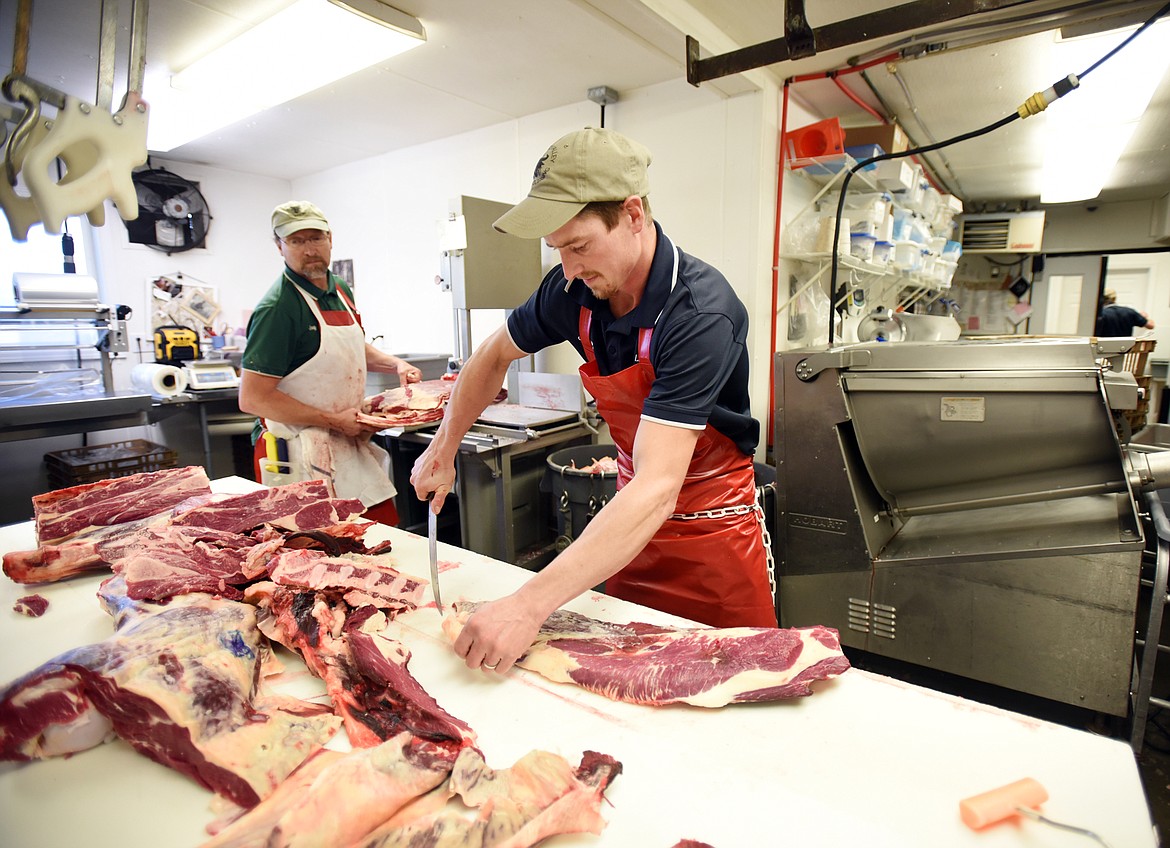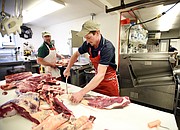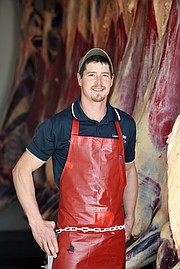Local meat processor sees demand for grass-fed beef
Jay Arlint walks a side of beef down a suspended metal track into the main processing area at Lower Valley Processing near Kalispell. The animal is aged and ready to cut.
Lower Valley co-owner Jeremy Plummer intercepts the carcass and begins meticulously cutting the beef into smaller, individual pieces, while Arlint brings in another side of beef. Within minutes Plummer and Arlint have processed the beef into consumer-ready portions.
The family-run operation slaughters roughly 60 head per week, between cattle, pigs and lambs. It’s something they’ve been doing more than 40 years, but in recent times they’ve observed an uptick in the number of grass-fed and locally raised beef coming through their doors.
“Grass-fed is definitely a growing demand in the Flathead Valley … as well as the demand for local meat,” Plummer said. “It’s growing more than we can keep up with and more than local producers can keep up with.”
Grass-fed beef is distinguished from its grain-finished counterparts by the latter part of their lives.
Both start out on their mother’s milk before moving to grass, and then their paths diverge. Traditionally, cattle are fed protein-rich grain, such as corn or barley, for a few months, allowing them to reach slaughter weight quickly. The grass-fed cattle will continue eating grass until they’re ready for slaughter, which can take an additional eight to 10 months, Plummer said — significantly longer than grain-finished cattle.
Proponents of the grass-fed alternative laud the leanness of grass-fed meat along with higher vitamin and omega-3 fatty acid content. They maintain that grass-fed cattle have a diet that is more natural, while those in favor of grain-finished beef claim their methods produce better taste and fat content.
Plummer, as the processor, isn’t in favor of one method over the other, but has noticed a rise in grass-fed and locally raised beef. Many local producers are small operations such as a single family raising anywhere from one to 10 head, who often keep one for themselves and market the rest.
“I get those questions daily now — where does the meat come from? Why is grass fat maybe better, maybe different?” he said.
Grass-fed beef makes up nearly 7 percent of all beef sales, increasing from $5 million in retail sales in 1998 to more than $2.3 billion in 2013, Beef Magazine reports. Grass-fed beef also fetches a premium in the grocery store — going for between $6 to $9 per pound compared to grain-fed beef, which sells for around $4-5.
While Lower Valley processes all types of meat — both grass and grain finished — one of its largest grass-fed producers is Havre’s KM Montana. The ranch splits processing with Lower Valley Processing and Vandevanter Meats in Columbia Falls, and distributes products throughout the valley at spots such as Stumptown Market in Whitefish and Brix Bottleshop in Kalispell.
“That makes you feel better buying it,” Plummer said of KM’s labeling, which advertises hormone-free product. “Even though it’s a little bit more, you know where it came from. This is kind of a niche market, but there’s enough customers craving that niche market in this valley where it’s going to work well.”
But the local products, even more so than specifically grass-fed ones, are really taking off, Plummer explained.
“The local demand is huge,” Plummer said. “Not that there’s anything wrong with the big beef process, but being able to do it yourself and have control of it is what’s driving people to want that.”
The Flathead Valley boasts at least five farmers markets and a number of small, organic grocers.
The food market research firm Packaged Facts found that local food generated $11.7 billion in sales in 2014 nationwide and is estimated to climb to more than $20 billion in 2019. Nearly half the people surveyed by Packaged Facts also reported they would pay 10 percent more for local foods and a third said they’d pay up to 25 percent more.
“The only failing aspect is not enough processors like us to be able to accommodate everything,” Plummer said. “I’m booked out until next year. We expand as much as we can … it’s still a family business. You can’t grow fast enough to accommodate it.”
Reporter Mackenzie Reiss may be reached at 758-4433 or mreiss@dailyinterlake.com.






